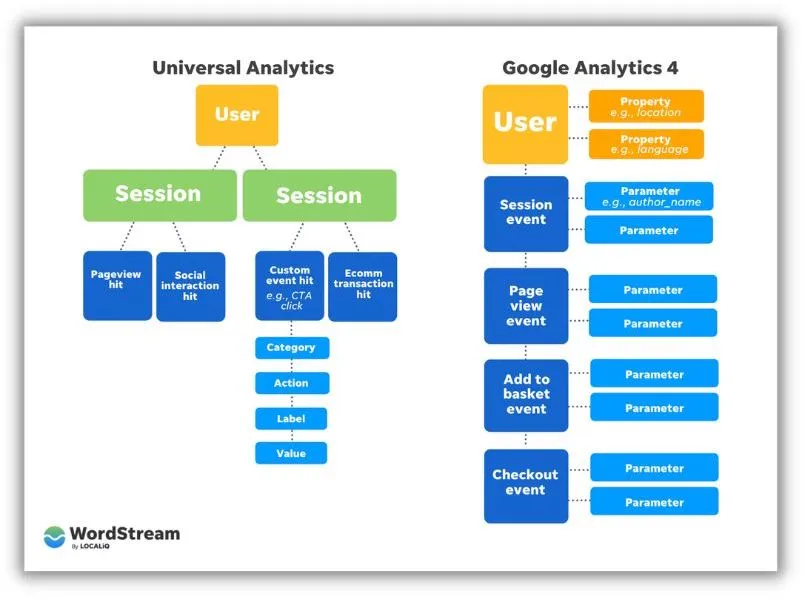A Biased View of Google Analytics Event Tracking
Wiki Article
Not known Facts About Google Analytics Event Tracking
Table of Contents4 Easy Facts About Google Analytics Event Tracking DescribedMore About Google Analytics Event TrackingGoogle Analytics Event Tracking Fundamentals ExplainedThe Buzz on Google Analytics Event TrackingThe Definitive Guide to Google Analytics Event TrackingOur Google Analytics Event Tracking Ideas

If you're going to establish up event monitoring manually, after that you're going to need to add some extra code to the aspects you wish to accumulate data from. The code you're mosting likely to work with will certainly look something such as this: There are 4 elements within that code fragment that you're going to require to define on your own: event, Group, event, Activity, occasion, Label and occasion, Value.
As you can see, 2 of these are required (classification and activity) while label and worth are optional. It all depends upon the kind of info you want relayed back to Google Analytics when a customer clicks the specified component (Google Analytics Event Tracking). It will be much simpler to specify these components if you evaluate your site and decide which elements/actions you want to track
The 7-Minute Rule for Google Analytics Event Tracking
Currently, you'll be asked to specify the and and you'll intend to pick from the drop-down food selection that appears when you click on. This will certainly bring up the very same event tracking components we checked out earlier, which you'll need to load out. When you've specified these, you can relocate down to the second box and choose the trigger that will fire your tag.On the following screen, you'll additionally have a field for calling your trigger and, if you click package, you'll see a checklist of the different triggers you can pick. In this instance, we wish to select and afterwards pick the option listed below. You'll establish the trigger to only discharge when an aspect is clicked with a Link that consists of the.
Every internet site talks. Before information analytics, we couldn't listen to the voices of our websites. Exactly how do you know what your site is claiming? Simple - Occasion monitoring! Occasion monitoring gives you an image of how customers involve with your site and service (Google Analytics Event Tracking). Do you want to recognize even more? Then, continue reading as we discover everything you require to understand, including what it is, why you need to track occasions, just how to take care of occasions information, and other relevant FAQs you might have.
The 7-Second Trick For Google Analytics Event Tracking
You can change between your occasion groups, actions, and tags in the Leading Events report. The Event Pages record shows the pages where occasions are activated.It reveals you the course they take as they move from one event to the next and assists you to identify which web content engages your audience the many. Events in Google Analytics have 4 main elements. They are also a component of the event tracking code. Google Analytics uses these codes to track customer interactions and group them into occasion reports.
Pick "Variables" > "Configure". A list of the specifications you can track on your internet site is on the. Under Clicks, Forms, and Video clips, double-check each specification. After checking all necessary fields, you can click "X" to close the window and return to the Review menu on the.
The Basic Principles Of Google Analytics Event Tracking
Choosing "False" will certainly avoid that session from being a bounce. If you have not done so, you might need to establish a variable in the Google Analytics Setups box. Click "New Variable ..." if you can not locate one to choose. After this, enter your GA monitoring ID in the Monitoring ID area.
Your ID will be on top of the display. To do this, adhere to the following collection of actions: After configuring the fields, select the "Triggering" area. When configuring your brand-new trigger, click this website the "+" switch, after that the "pencil" switch, after that choose your trigger type. Label your trigger and specify the conditions that cause cause firing.
Not known Facts About Google Analytics Event Tracking

When it familiarizes which areas and components are guiding clients with your conversion funnel, you still will not understand. Without occasion tracking, GA records will only count sees as single-page sessions, even if customers spend a whole lot of time on one page and involve with it considerably (and a bounce).
How does event tracking attain this?Single-web page sessions known as bounces start and conclude on the exact same web page. Without occasion tracking, GA will categorize a customer's go to as a bounce if they don't browse to an additional web page, despite how they engage with it. For instance, a video-rich web page can have a greater bounce rate if events are not tracked.
How Google Analytics Event Tracking can Save You Time, Stress, and Money.
For GA to take event hits into account when determining bounce rates, you must pick "Non-interaction occasion" as "False" during the GTM setup. Setting "occasion objectives" with event activity is a superb method to monitor user tasks you value highly, such as brand-new lead entries or clicks on a call to activity.Report this wiki page